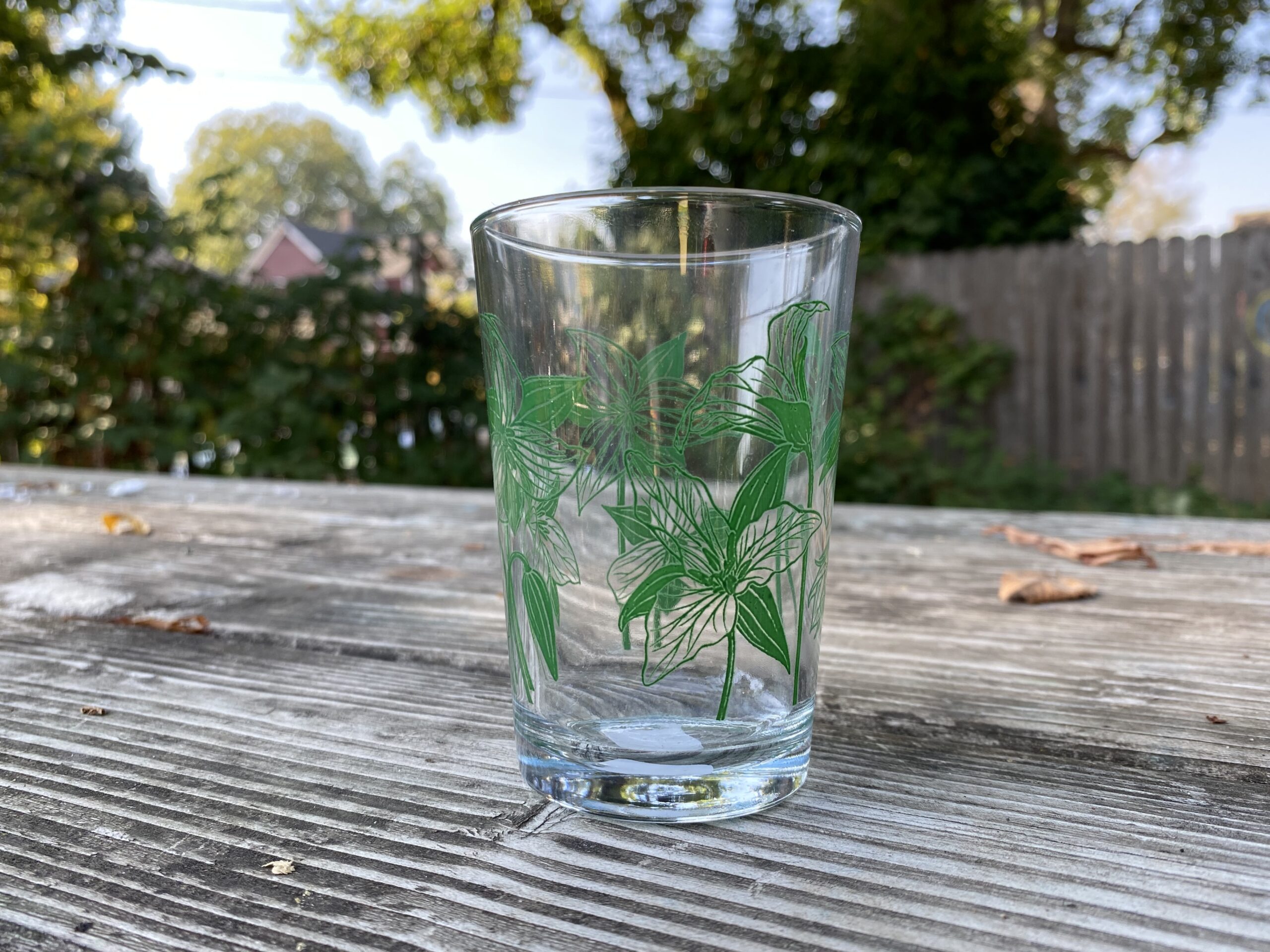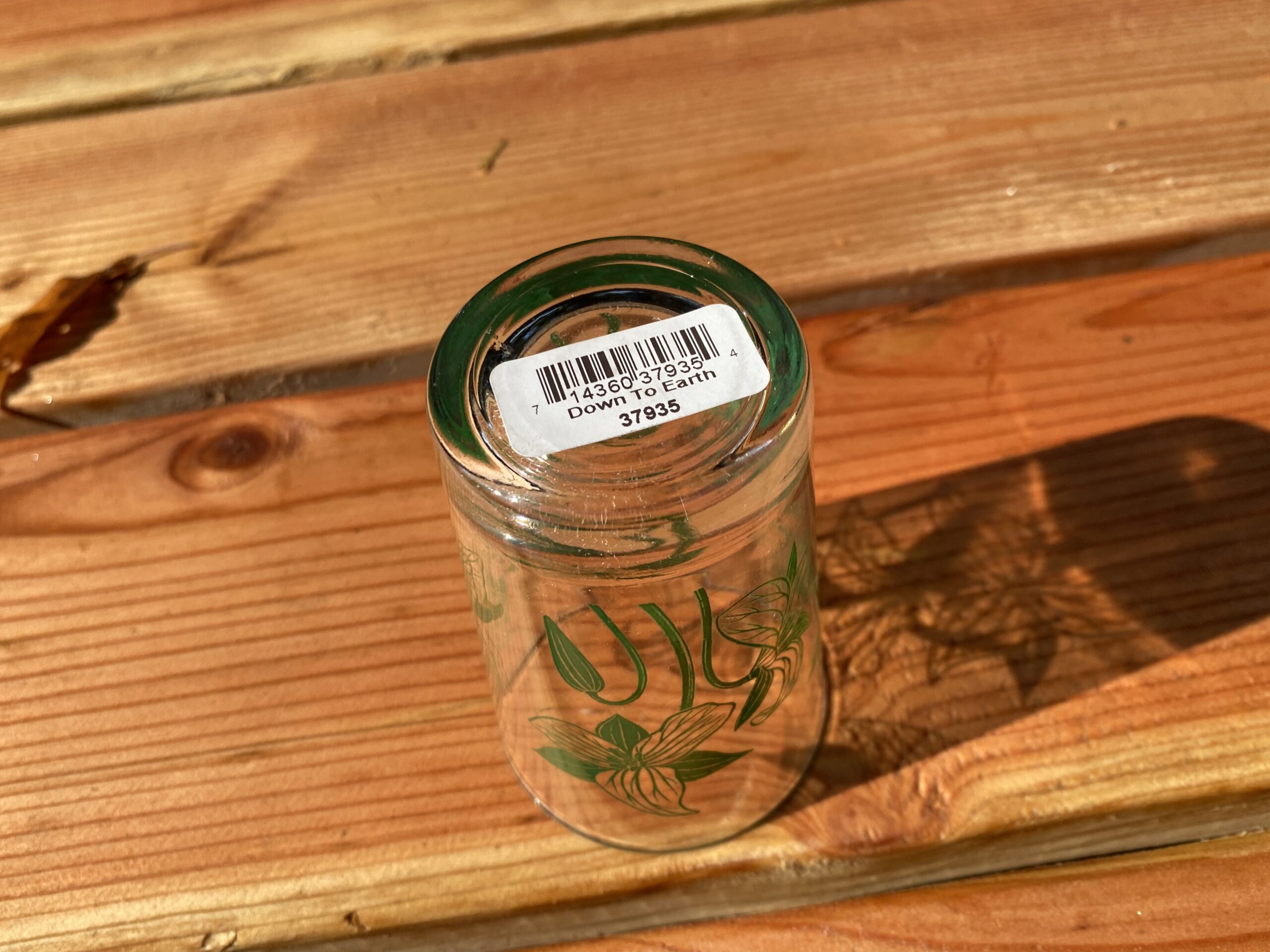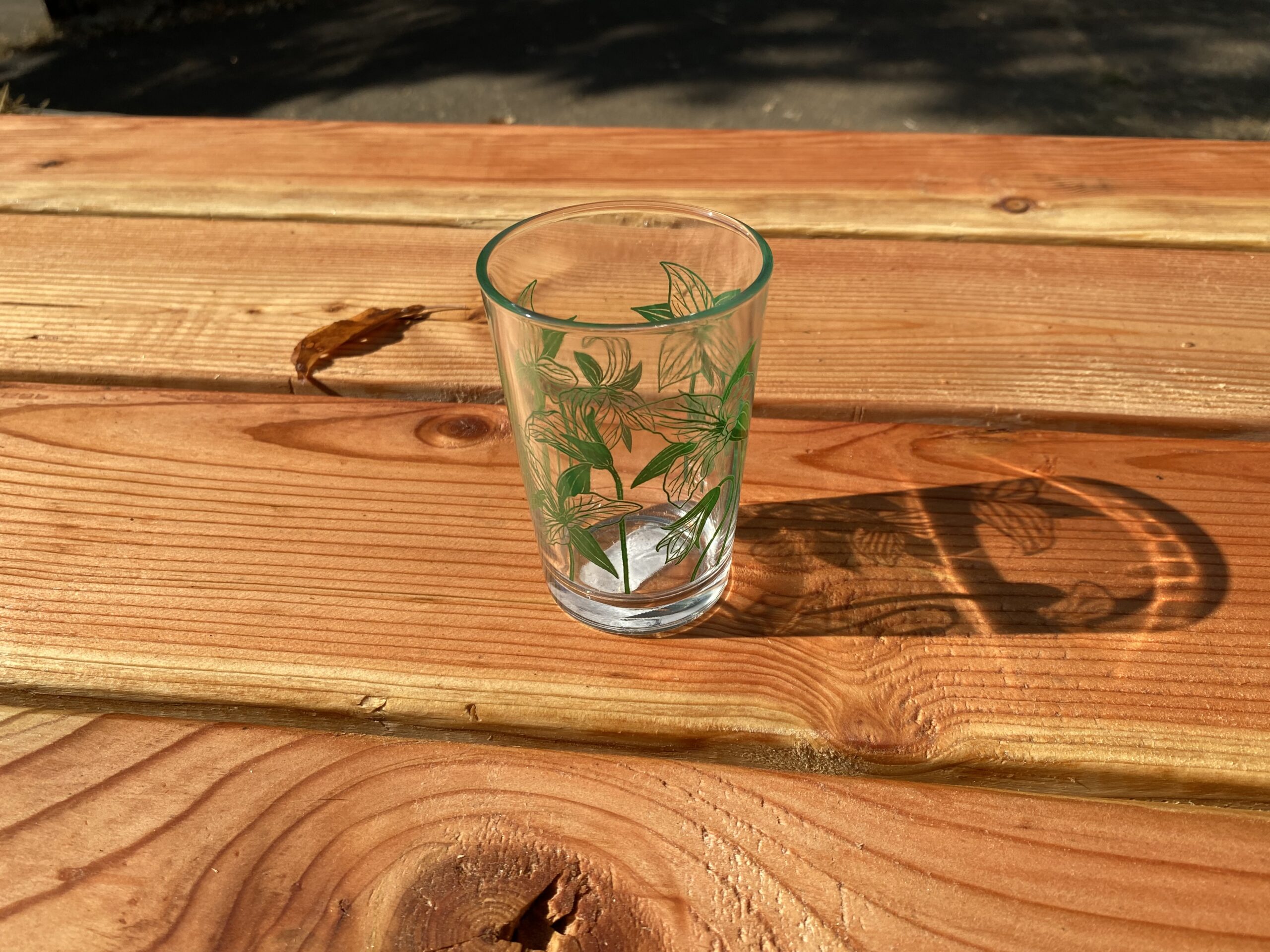XRF test results for Down to Earth green flower design juice glass (purchased at New Seasons Market).


 October 14, 2022 – Friday
October 14, 2022 – Friday
Full XRF test results for the glass pictured are below
The glassware in this set [three examples of different colors from this brand have been posted on the website] is safe by all current / modern standards, as far as the presence of metallic toxicants are concerned. Specifically, they are negative for Lead, Mercury, Arsenic, and Antimony [and while two colors tested positive for trace Cadmium – that too was at very low levels – that are considered safe by all current United States and International standards].
That said, with a history of cancer in my family, and the fact that Cadmium is a known carcinogen, combined with the fact that there are many completely Cadmium-free glassware options available), I would not personally choose any of these glasses (just on principle).
Reading taken on the side of the glass with a focus on the green
60-second reading
Readings repeated multiple times to confirm the results
- Lead (Pb): non-detect
- Cadmium (Cd): non-detect
- Tin (Sn): non-detect
- Mercury (Hg): non-detect
- Selenium (Se): non-detect
- Barium (Ba): non-detect
- Arsenic (As): non-detect
- Chromium (Cr): non-detect
- Antimony (Sb): non-detect
- Copper (Cu): non-detect
- Titanium (Ti): 8,429 +/- 1.128 ppm
- Manganese (Mn): non-detect
- Zinc (Zn): non-detect
- Bromine (Br): non-detect
- Indium (In): 11 +/- 6 ppm
- Bismuth (Bi): non-detect
- Zirconium (Zr): 299 +/- 11 ppm
- Niobium (Nb): non-detect
- Iron (Fe): 132 +/- 86 ppm
- Tungsten (W): non-detect
- Platinum (Pt): non-detect
- No other metals detected in consumer goods mode.
See purple glass from same manufacturer for reading on glass alone.
For those new to this website
Tamara Rubin is a Federal-award-winning independent advocate for consumer goods safety and a documentary filmmaker. She is also a mother of Lead-poisoned children. Tamara’s sons were acutely Lead-poisoned in August of 2005. She began testing consumer goods for toxicants in 2009 and was the parent-advocate responsible for finding Lead in the popular fidget spinner toys in 2017. Her work was also responsible for two CPSC product recalls in the summer of 2022, the Jumping Jumperoo recall (June 2022) and the Lead painted NUK baby bottle recall (July 2022) and was featured in an NPR story about Lead in consumer goods in August of 2022. Tamara uses XRF testing (a scientific method used by the U.S. Consumer Product Safety Commission) to test consumer goods for toxicants (specifically heavy metals), including Lead, Cadmium, Mercury, Antimony, and Arsenic. All test results reported on this website are science-based, accurate, and replicable. Items are tested multiple times, to confirm the test results for each component tested and reported on. Please click through to this link to learn more about the testing methodology used for the test results discussed and reported on this website.
Never Miss an Important Article Again!
Join our Email List






